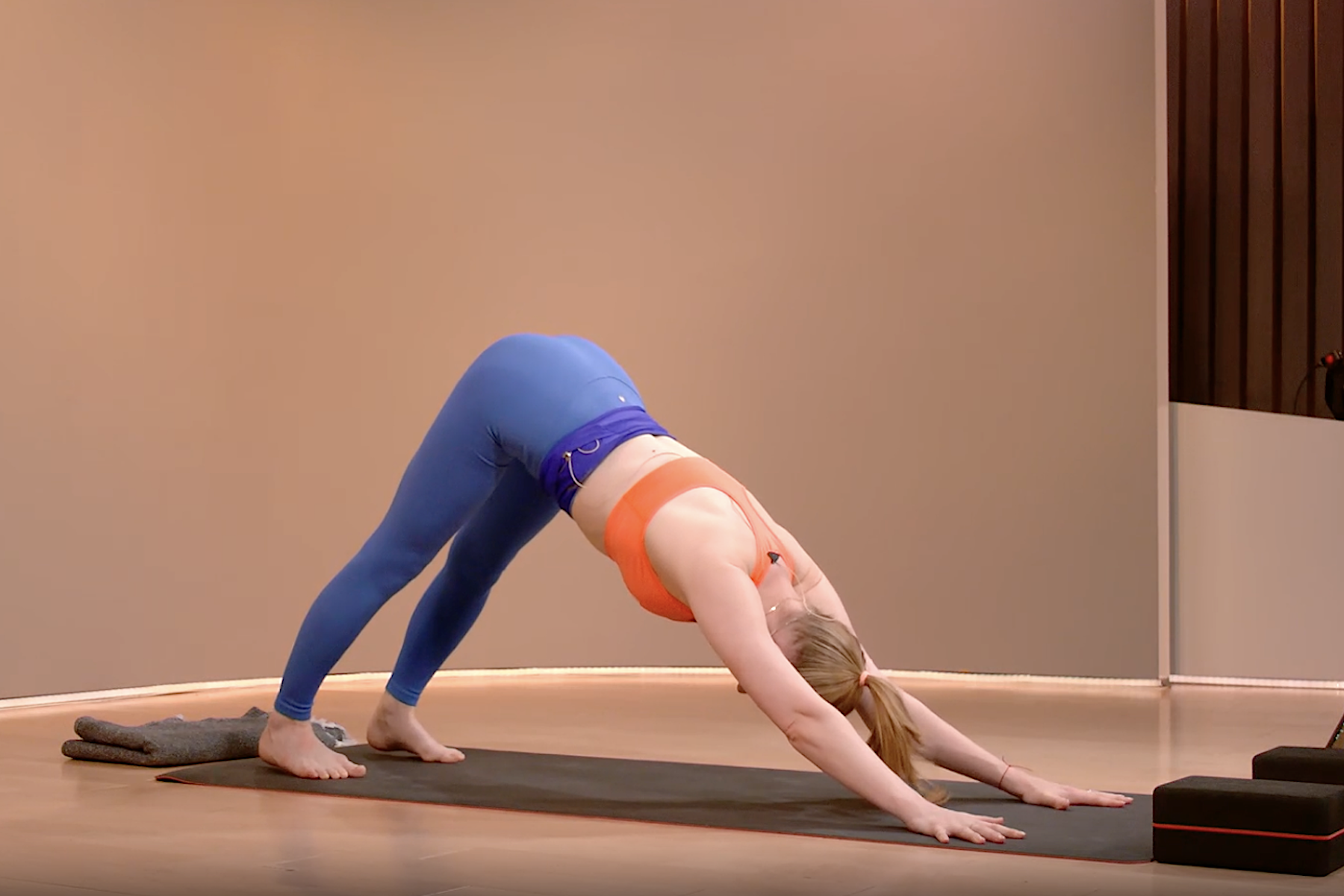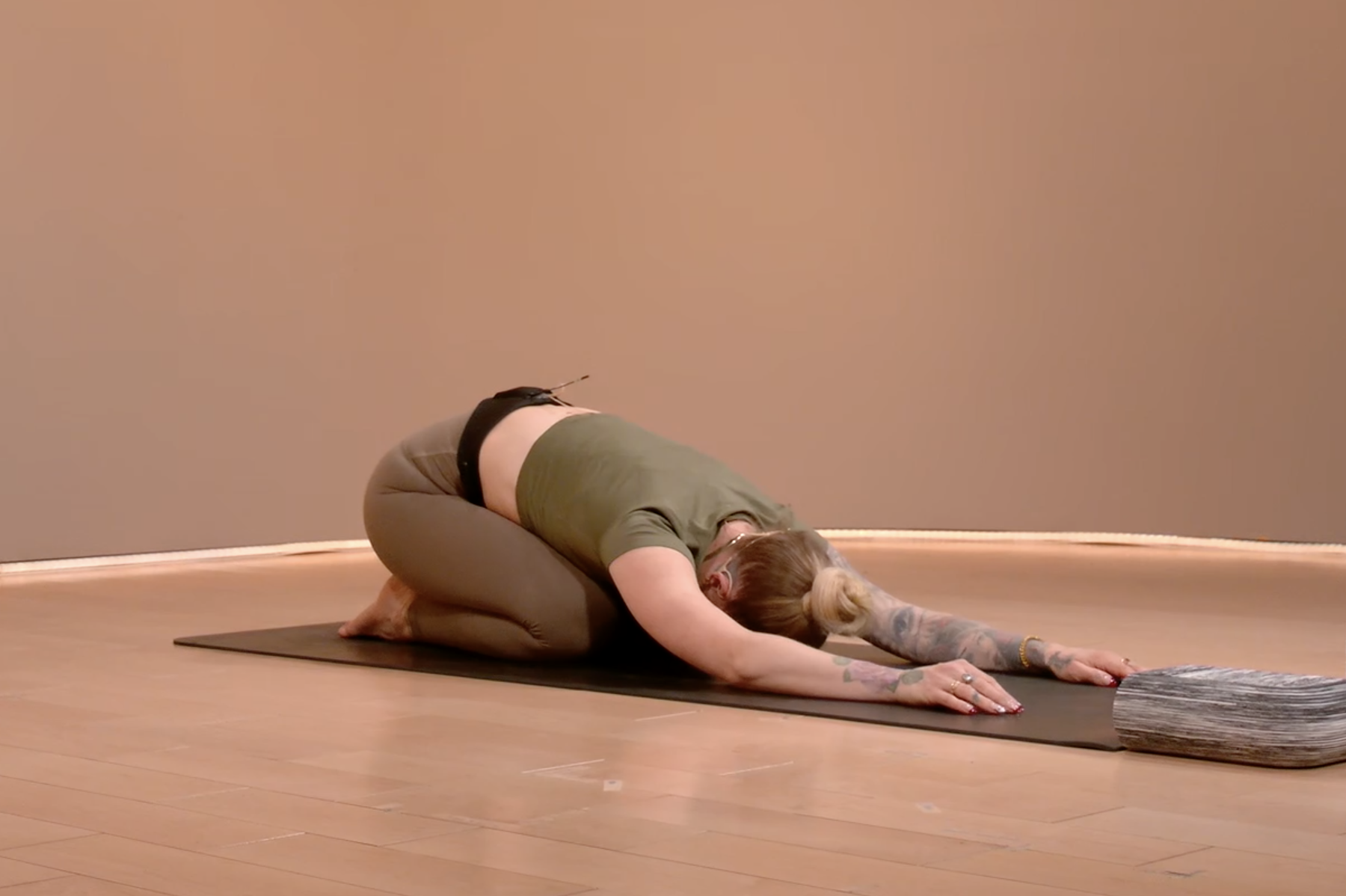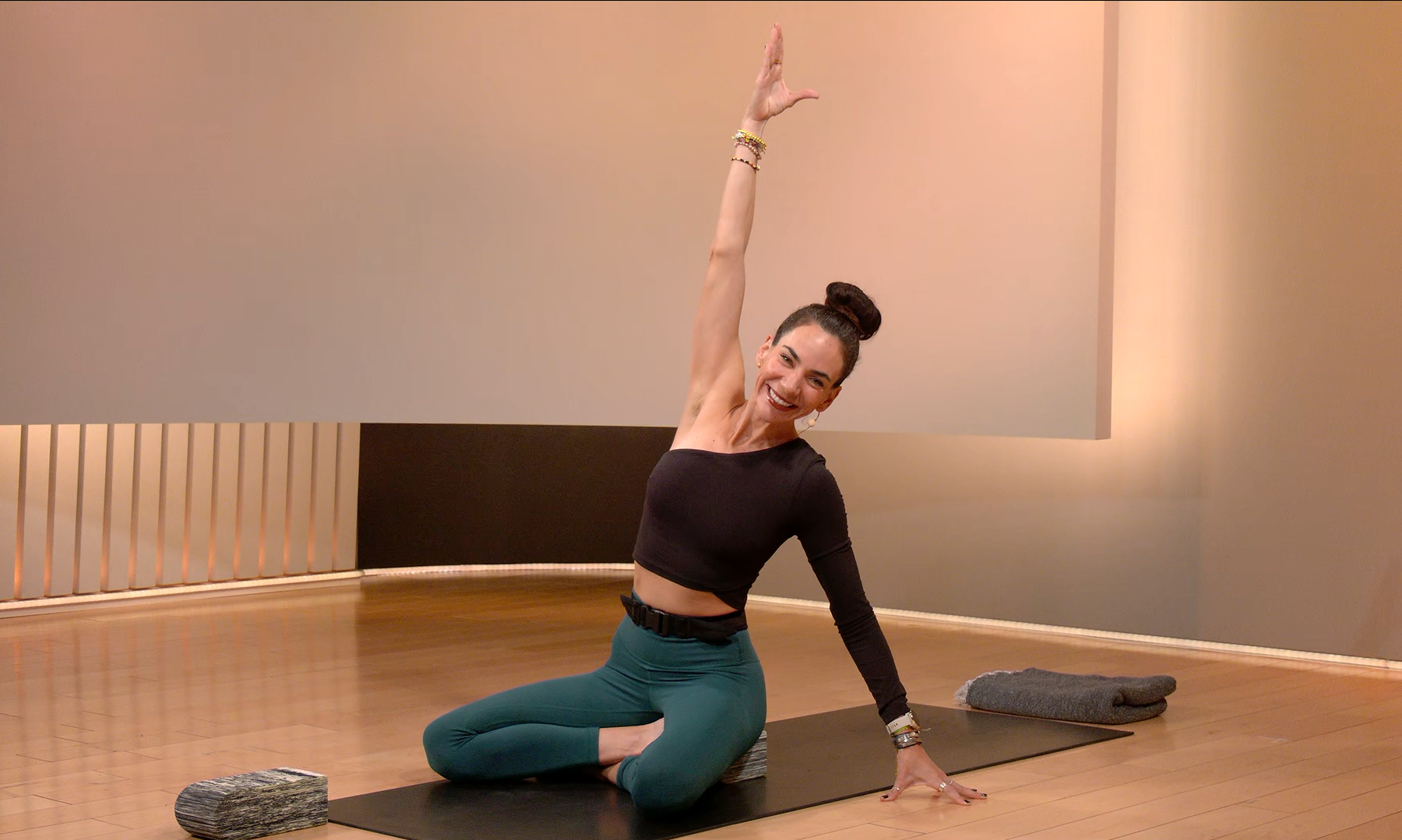What Is Slow Flow Yoga?
Benefits of Slow Flow Yoga
4 Essential Slow Flow Yoga Poses for Beginners
How to Elevate Your Slow Flow Yoga Practice
If you’re craving a juicy, restorative yoga practice filled with deep stretches and gentle movement, you’ve come to the right place. Slow flow yoga is one of the most accessible yoga practices, thanks to its measured, intentional pace and slower transitions. Whether you’re a complete yoga beginner or using yoga to recover from intense workouts, a slow flow yoga practice can benefit your mind, body, and spirit.
Discover more ways to reach your goals with Peloton
Here, we’ll explore more about slow flow yoga, from the benefits of slow flow yoga to the most common poses. Trust us, your body will thank you afterward.
What Is Slow Flow Yoga?
Before you can start your slow flow yoga sequence, you’ll need to understand the basics of this yoga style. Here’s what to know about slow flow yoga.
Sequence: A slow flow yoga sequence will typically cycle through about half the asanas (or poses) that you would in a normal vinyasa class. Expect fewer, longer sequences.
Poses: You’ll see similar poses in slow flow yoga as you will in vinyasa classes. Most poses will be beginner-friendly and easily modified.
Class structure: While any slow flow yoga class will vary based on instructor, they’ll likely follow a similar pattern: warm-up with sun salutations, flow, floor poses, and Savasana.
Equipment: You’ll need a yoga mat, of course, and some other yoga props may enhance your slow flow practice too, such as blocks, a strap, and a bolster.
Pace
The most important thing to understand about slow flow yoga is how the pace differs from other classes. Unlike power yoga or vinyasa classes, slow flow yoga is an intentionally slower-paced class, aimed at helping both beginners and those who want to deepen their understanding of yoga. You’ll stretch out holds in each pose for several breaths, and you’ll typically do half the poses you would in a faster-paced class. The result: A more focused practice, deeper stretches, and a relaxed mindset in class.
Benefits of Slow Flow Yoga
What makes slow flow so amazing? These are just a few of the benefits of slow flow yoga you’ll find on the mat.
Physical Benefits of Slow Flow Yoga
Flashing from pose to pose in a power yoga class isn’t the only way to get a good workout. In fact, slow flow yoga is an ideal way for anyone (but especially beginners) to enjoy the physical benefits of yoga. Because you’re holding poses for longer, you’ll be able to build up your stamina and create a foundation for the rest of your yoga journey.
At the same time, you’ll build strength by challenging your muscles for longer periods of time. Finally, as you hold stretching poses for longer (hello, Pigeon Pose!), you’ll feel your flexibility improving with each class.
Mental Benefits of Slow Flow Yoga
Right from the start, slow flow yoga will help you build a deeper understanding of each individual asana—which then ladders up into advancing your comprehensive practice. “The reality for most of us is that it takes a little while for the mind to navigate complex movements and activate hard to find muscles, so students often end up just ignoring the instructions,” says Ross Rayburn, Peloton yoga instructor.
On the other hand, when you’re encouraged to move slowly, you have more time to consider and act upon the instructions given—so you’ll never feel like you’re rushing in and out of poses.
Additionally, slow flow yoga can bring a bit more of a chill vibe into the practice. Let’s face it, you’re probably already rushing around in your day-to-day life. In slow flow classes, you’re able to calm your nervous systems and recenter your breath for a more balanced, relaxed experience.
Plus, you can incorporate self-reflection into your slow flow yoga practice. “This type of flow gives space for ‘deeper’ yoga by accessing or realizing more of the instructions given and also deeper by having time to reflect and process what you are experiencing. “That processing and reflecting time is crucial to more deeply imprint the healthy patterns you can cultivate in your yoga practice,” continues Ross.
4 Essential Slow Flow Yoga Poses for Beginners
Ready to take on a slow yoga flow? Here are some of the most common slow flow yoga poses you’ll find in your classes.

Downward Dog (Adho Mukha Svanasana)
Downward Dog is a foundational yoga pose, and in a slow flow yoga class, you may find yourself spending more time here for longer durations (even if you’re not whipping through sequences as quickly as in power yoga).
Start in a high plank position with hands directly below your shoulders and hips in line with shoulders. Tuck hips under slightly.
Keeping your arms straight but not locked, press your hands into the ground as you exhale and slowly lift your hips toward the ceiling. Simultaneously shift backwards as your chest reaches toward your thighs. Your legs can remain straight, or you can slightly bend your knees. Your feet do not need to touch the ground fully.
Spread your fingers wide and grip your mat. Press the backs of your thighs toward the wall behind you.
Take four to eight breaths in this position.

2. Child’s Pose (Balasana)
Child’s Pose is the reward at the end of a tough workout—or a welcome breather during an intense slow flow yoga sequence. Savor the chance to lay your head on your mat and focus on sitting back into your hips, elongating your lat muscles, and extending your shoulders.
Start in a kneeling position with your shins flat on the ground and knees wide.
Push your hips back over your heels. Widen your knees so they're roughly diagonal, aiming at the corners of your mat.
Begin walking your arms straight forward on the floor until your chest or stomach meets your thighs and your forehead meets the floor.
Drive your palms and fingertips into the ground to enhance the stretch in your lats. You can also stack blocks in front of you for your forehead to rest on.
Take four to eight breaths in this position.

3. Seated Side Bend (Parsva Sukhasana)
Open up your airways and expand your side body with this seated slow flow yoga pose. Focus on keeping your hips grounded and lengthening through your reaching arm, not hunching over on one side.
Begin in a cross-legged seated position on your mat with your left shin crossed over right.
Place your right hand (or fingertips) down on the mat to the right side of your body. On an inhale, reach your left hand up to the sky, straightening your left arm but not locking it out.
With your hips still heavy on the ground, gently bend toward your right side with your left arm reaching long up and over your torso. This should feel like it’s expansive on your left side, rather than like you’re crunching over on your right side.
Take four to eight breaths in this position.

Cat Pose (Marjariasana) and Cow Pose (Bitilasana)
Cat-cow is a gentle, undulating movement that’s perfect for a slow flow yoga sequence. For a slight variation, try this asana while sitting cross-legged or standing upright.
Start in a tabletop position with your wrists directly under your shoulders and your knees in line with your hips.
Move into Cat Pose. On an exhale, arch your back (imagine a Halloween cat) and drop your chin toward your chest. Scoop your tailbone toward your mat and keep your eyes on your thighs.
Move into Cow Pose. On an inhale, arch your pelvis to create a “cereal bowl” in your low back. One vertebrae at a time, continue to arch your back moving up toward your neck. Lift your chin and tailbone and keep your gaze toward the ceiling.
Move between both poses with each inhale and exhale for four to eight breaths.
How to Elevate Your Slow Flow Yoga Practice
Once you’ve gotten oh-so-comfy in your slow flow yoga sequences, you may be ready to challenge yourself a bit more (or not—and that’s totally fine). Here are a few ideas for adding a little spice to your yoga slow flow.
Increase duration. Not surprisingly, the simplest way to advance your slow flow practice is to increase the duration you hold your poses. Instead of 30 seconds, try 40 or 45. No need to hold for three minutes at a time, like in a yin yoga class, but every second counts.
Tune into your biomechanics. If you geek out on understanding exactly what’s happening in your body during yoga, pay extra attention to what the instructor is saying during class and how their cues relate to your positioning and real-time muscle feel. Ross points out that you’ll often leave slow flow yoga with a better biomechanical understanding of what happens during each pose. Bonus points if you do extra research outside of class.
Try advanced modifications—in intervals. Interval training doesn’t have to only be for cardio and strength. Since slow flow yoga sequences are longer-lasting, try incorporating a more challenging version of the asana for 15 or more seconds at a time. You’ll get to practice a new yoga skill without feeling rushed.
Seek out advanced classes. In the real world, an advanced slow flow yoga class will require more balancing and trickier transitions; ask the instructor if you’re not sure if you’re ready for an advanced slow flow yoga sequence. Or, if you use the Peloton App, you can filter by Class Type: Slow Flow and Difficulty: Intermediate or Advanced to narrow down your choices.

Peloton App
Access thousands of classes with no equipment needed.
Sometimes, slowing things down is the best way to amp up your yoga practice. A slow yoga flow is ideal for boosting recovery, increasing endurance and stamina, and learning more about the mind-body connection between your muscles and your brain.
This content is for informational and educational purposes only and does not constitute individualized advice. It is not intended to replace professional medical evaluation, diagnosis, or treatment. Seek the advice of your physician for questions you may have regarding your health or a medical condition. If you are having a medical emergency, call your physician or 911 immediately.
Level up your inbox.
Subscribe for a weekly dose of fitness, plus the latest promos, launches, and events.
By providing your email address, you agree to receive marketing communications from Peloton.
For more about how we use your information, see our Privacy Policy.














